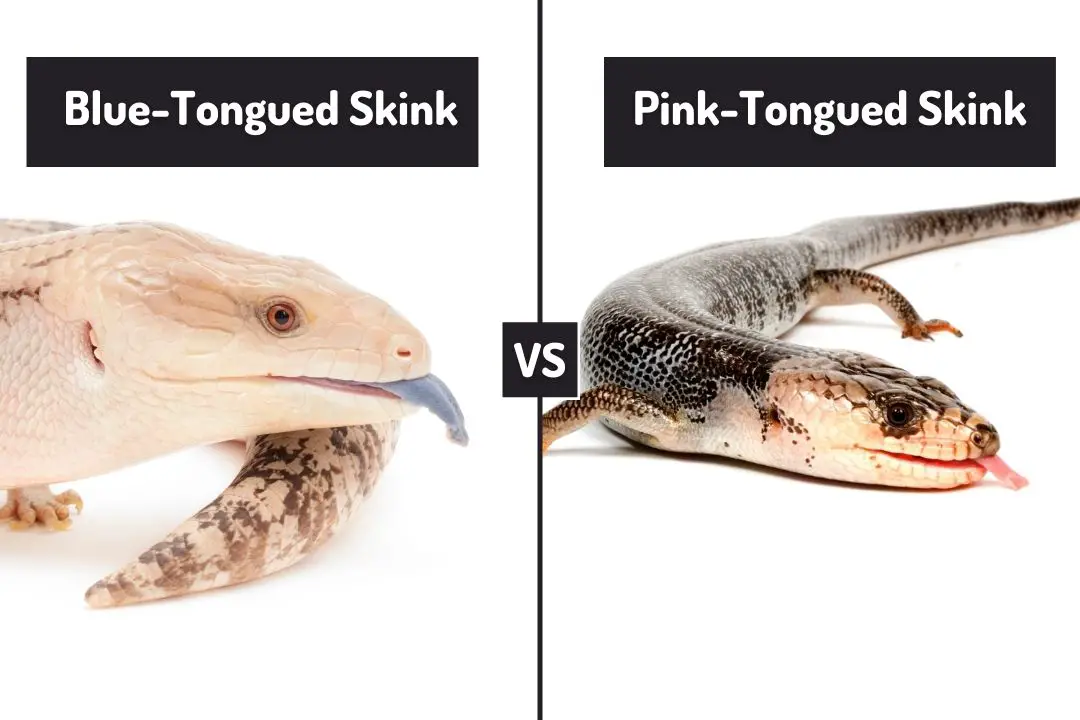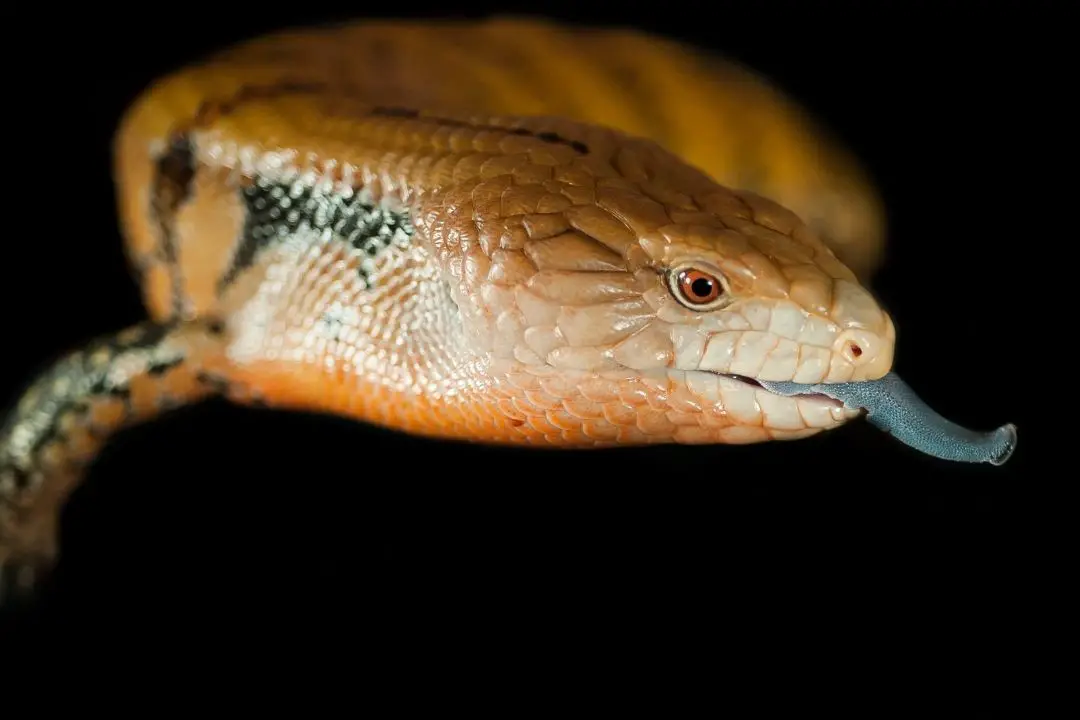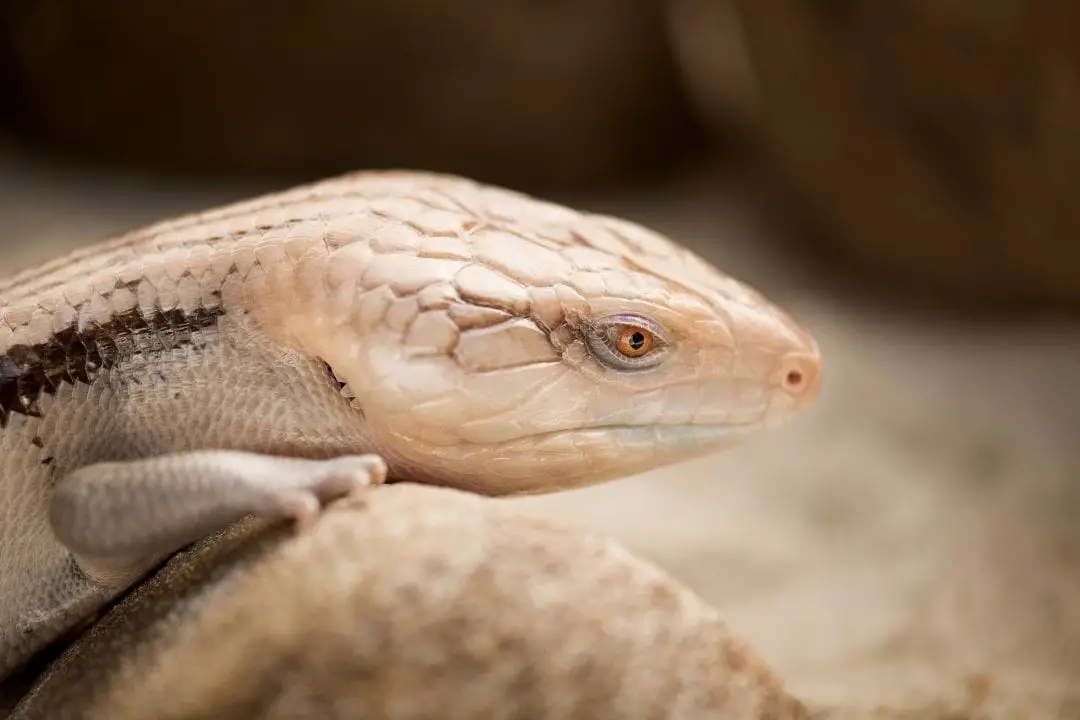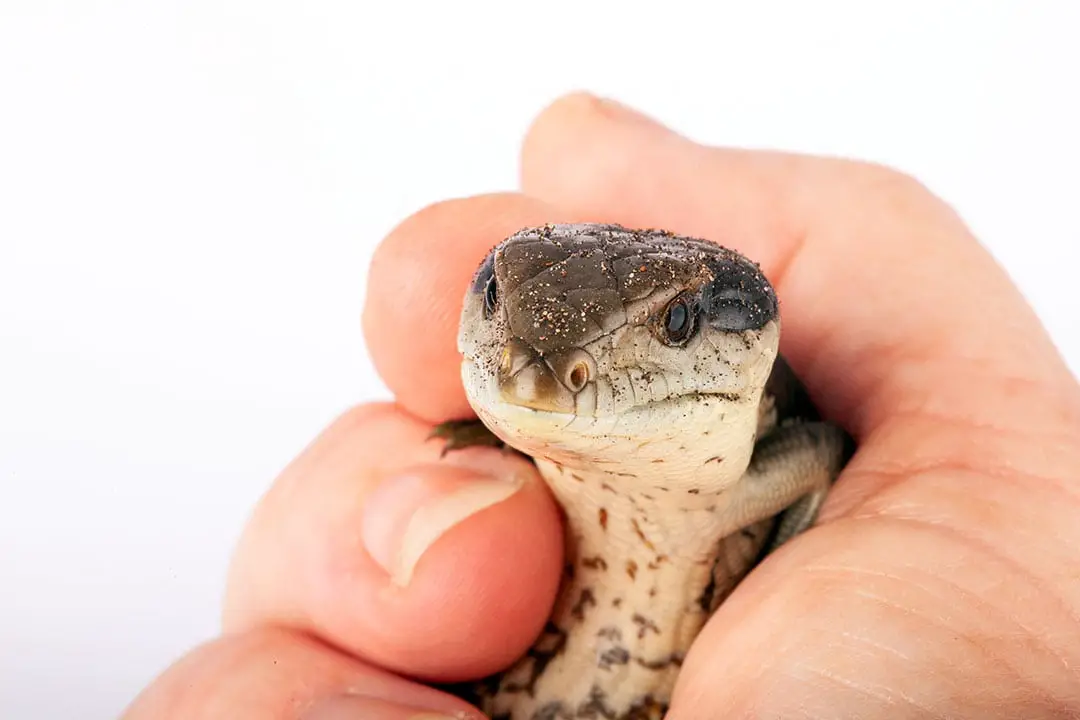There are two popular skinks with similar names out there. The blue-tongued skinks are members of the Australian and Indonesian genus Tiliqua.
The single most common species in the pet trade in the United States is the Northern blue-tongued skink (Tiliqua scincoides intermedia) while the Eastern (T. s. scincoides) is the most common skink in its native Australia.
However, there are also pink-tongued skinks (Cyclodomorphus gerrardii). Since they have such similar names and look similar, I will go over the differences and how to tell these two skinks apart.
Please note that I will be generalizing for blue-tongued skinks, but will focus on Australian species and note any major differences based on species.
1. Size
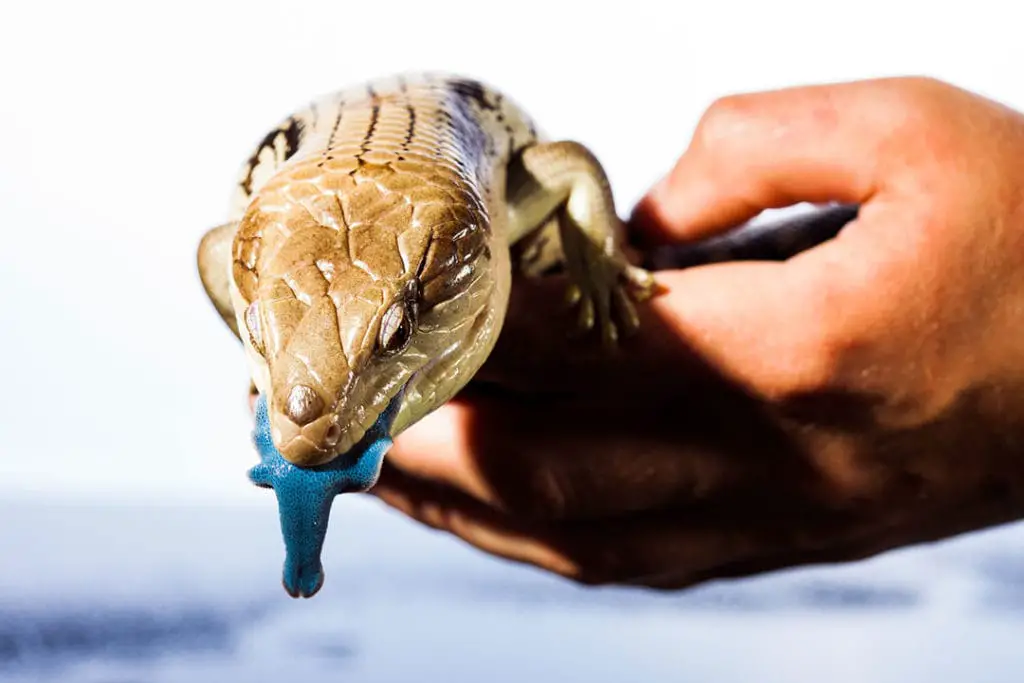
The first thing to note about blue-tongued skinks is that they can get pretty big. They tend to be between 18 and 24 inches long as adults.
Pink-tongued skinks are rarely going to reach over 18 inches long at their full size. Pink-tongued skinks are lighter on average since they are smaller and more slender.
Adult Eastern blue-tongued skinks (T. scincoides scincoides) and Northerns (T. s. intermedia) tend to be a similar length but are much more hefty animals.
2. Color
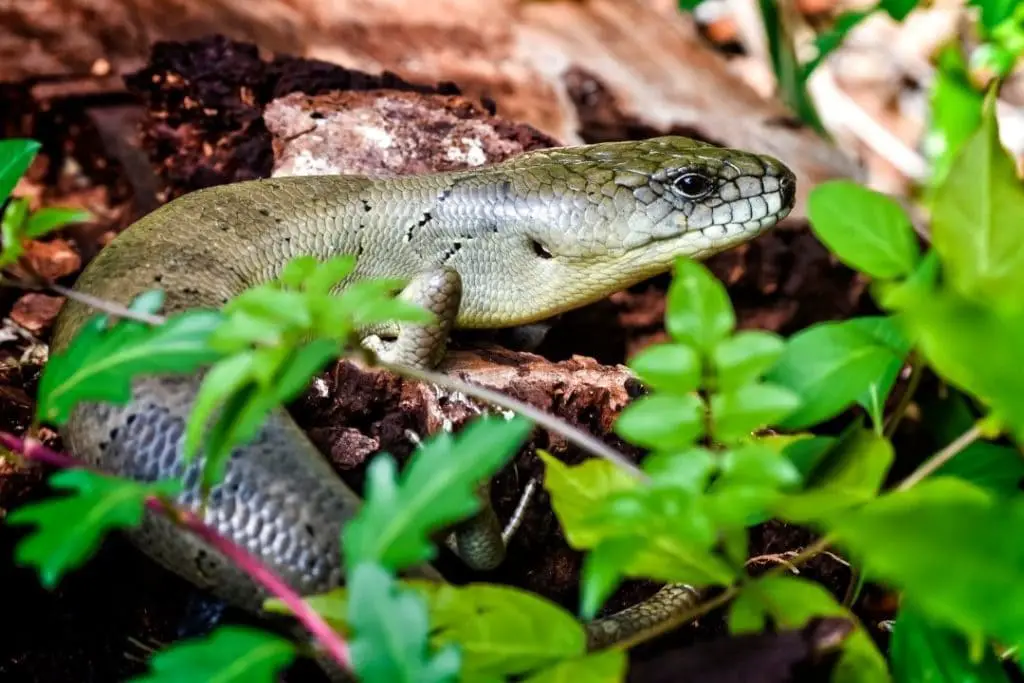
The most obvious difference between the two skinks is the tongue color. Pink-tongues always have pink tongues. Blue-tongued skinks have blue tongues, but they can look black.
Some color morphs can have lighter tongues or pink patches. Pink-tongued skinks tend to have a gray to light brown background color with dark bands.
Blue-tongued skinks tend to be some shade of brown or gray with darker markings, The exact pattern depends on the species and subspecies.
3. Diet
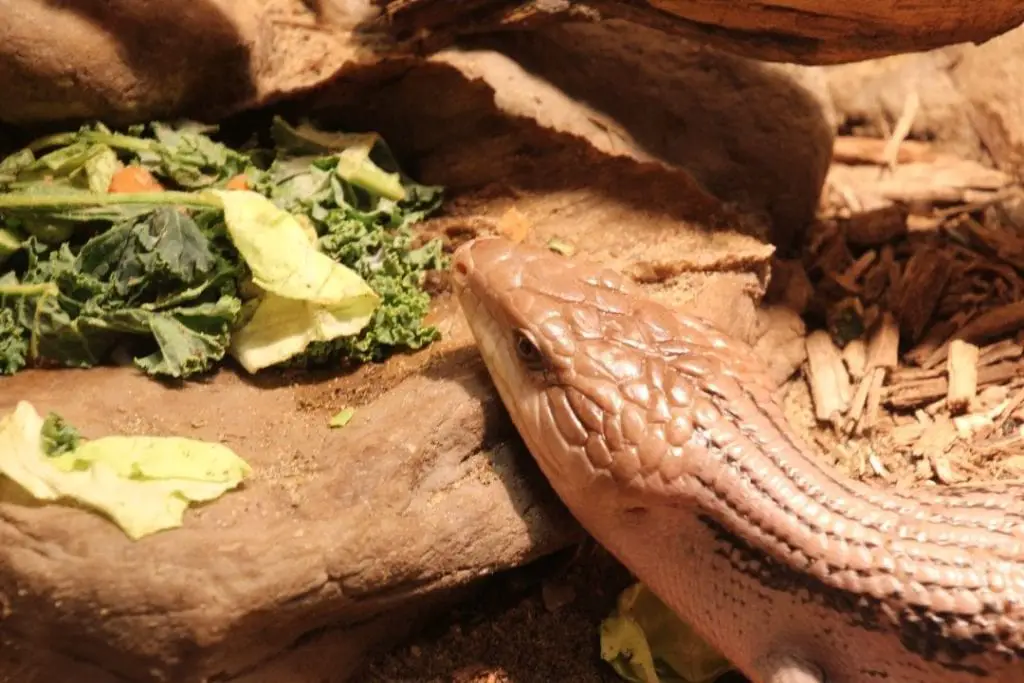
Blue-tongued skinks are omnivores. They eat a wide variety of fruit, vegetables, insects, and meat in the wild.
The only species that has a different diet is the shingleback, which eats primarily vegetables with a small number of insects or other small animals for protein.
Pink-tongued skinks have a much more specialized diet. They eat snails and slugs almost exclusively.
They have powerful jaws and strong, flat teeth that allow these skinks to easily crush snail shells and eat the animal itself.
They rarely will eat anything else.
This can make keeping them a challenge unless you can breed your own slugs or snails. Canned snails can be fed, but some skinks are picky.
4. Habitat
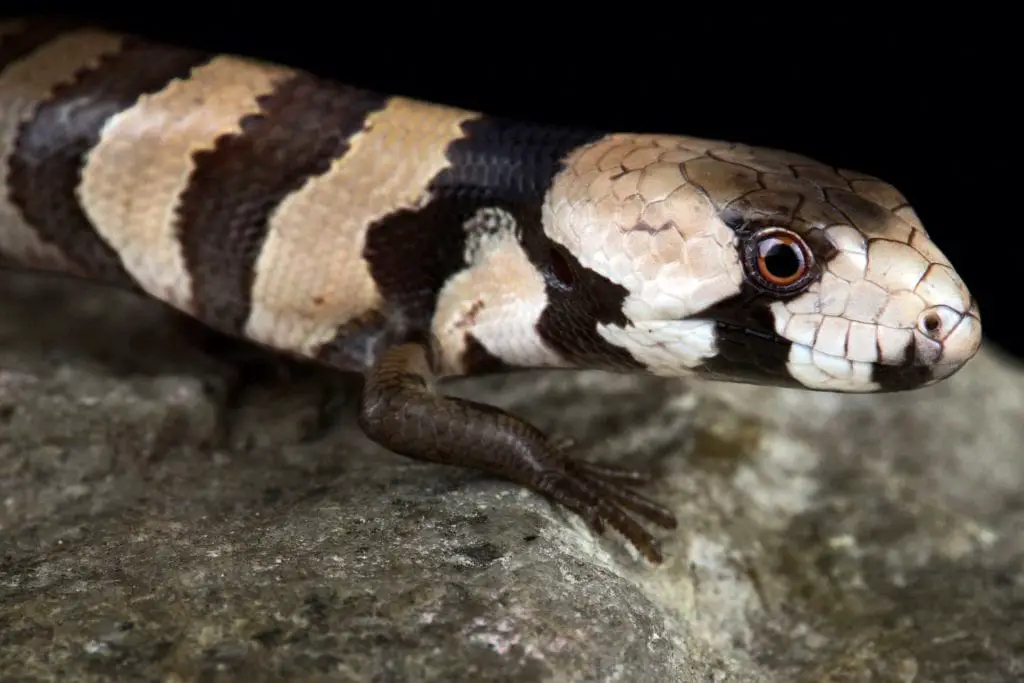
Pink-tongued skinks are only found along the eastern coast of Australia. They prefer moist habitats and rarely live far from rainforests and similar humid woodlands.
Blue-tongued skinks live in wider habitats.
The common blue-tongued skink is found all over Australia. They tend to prefer middling to low humidity and high temperatures.
Indonesian species do prefer humid forests as well. Some species of blue-tongued skinks prefer hot areas such as Centralian skinks. Blotched skinks tend to like higher elevations, so they prefer lower temperatures and middling humidity.
5. Body Proportions
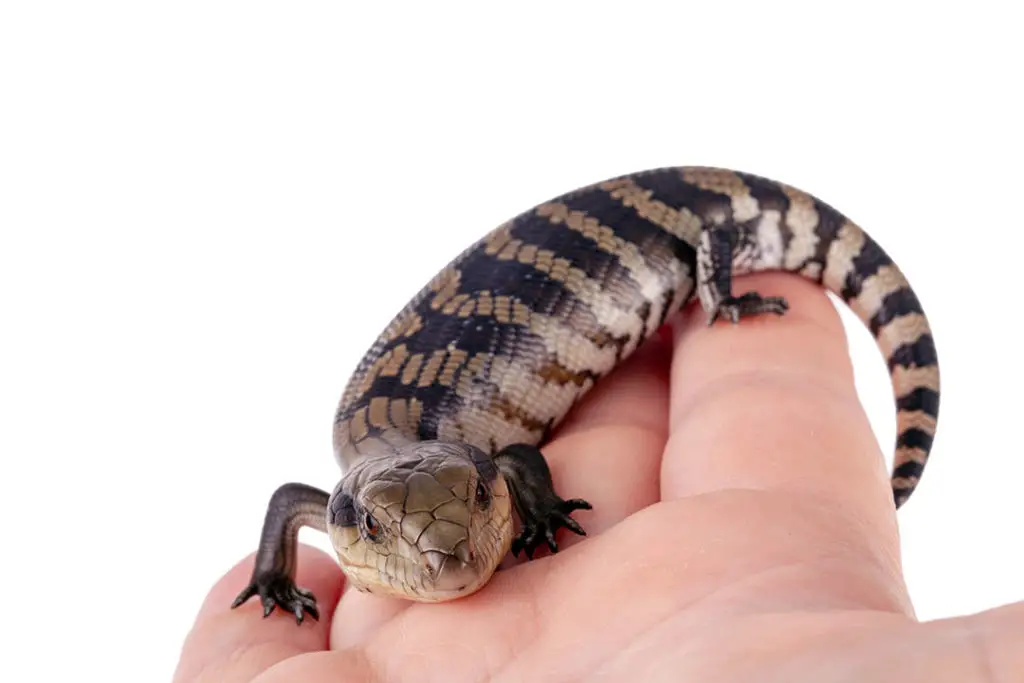
Blue-tongued skinks tend to be stocky with short legs. Most species are substantial animals. Shinglebacks are notably much thicker with robust limbs and a short, nubby tail.
Pink-tongued skinks have longer limbs with long claws. Pink-tongued skinks also have a prehensile tail. This means they can use their long, thin tail to hang onto branches as they climb.
6. Behavior
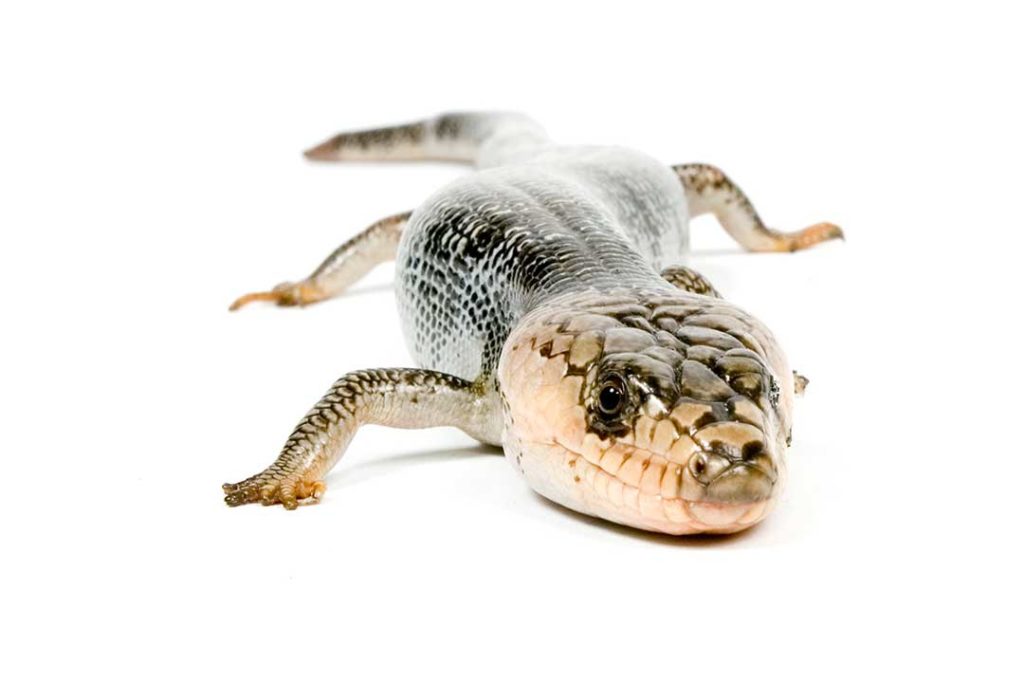
Blue-tongued skinks are notoriously territorial. They all need to be housed separately even from a young age.
Females defend their territories while males will fight during the breeding season. Pink-tongued skinks are very good at climbing.
Even adults can be found climbing. Climbing into vegetation is a common method of avoiding predators.
Many of their major predators are terrestrial aside from birds. Most blue-tongued skinks are more terrestrial. Since they tend to have shorter limbs and claws, they cannot climb as well.
They will climb if given a chance, but they tend to prefer rocks and will rarely climb as high as a pink-tongued skink.
Both lizards are friendly when born in captivity.
7. Captivity
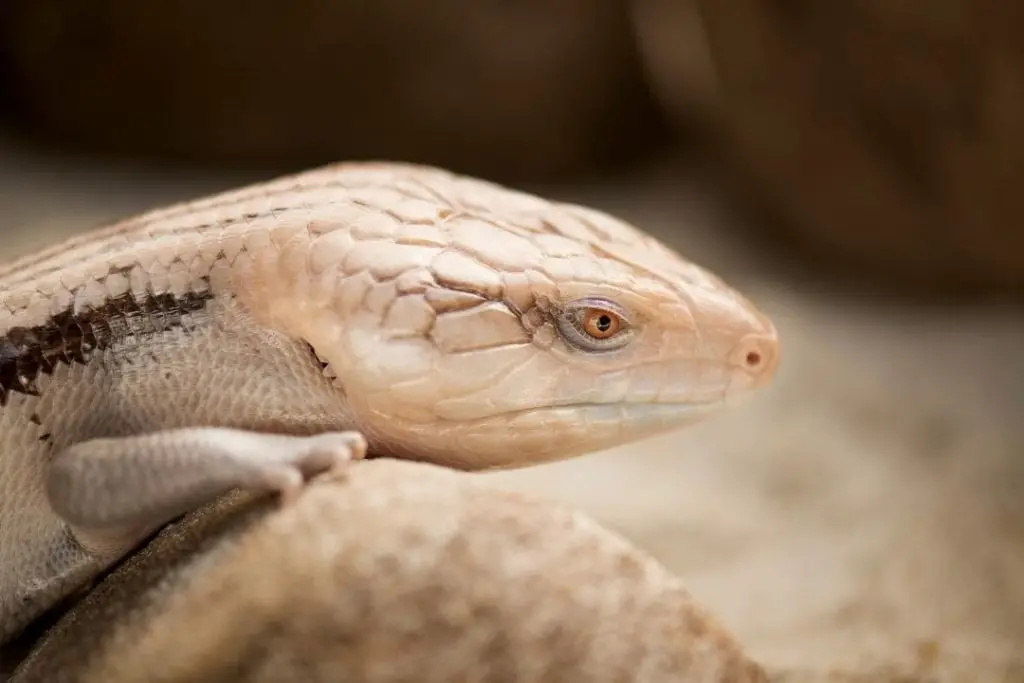
Since most blue tongues are terrestrial, they need an enclosure with a large amount of floor space. 8 feet for a single skink is recommended.
It is also best not to house them together. They do appreciate climbing options, but they need easier climbing surfaces than anything else.
Pink tongues need a large enclosure, but they need more vertical space. They are semi-arboreal, so they should have a set-up like most other semi-arboreal lizards. Aim for thicker branches to help support the weight of the skink.
Pink-tongued skinks that are bought from a breeder in the United States are long-term captives and tend to be calm and easy to handle.
Captive Easterns are also generally calm and easy to handle. Northerns can be slightly more skittish. Most Indonesian species are defensive. True captive-bred animals will be calmer, but most animals on the market are either farm-bred, born from wild-caught gravid females, or wild-caught.
In general, pink-tongued skinks can be very good pets.
The biggest struggle tends to be the diet. They can be stubborn about eating other diets. If you can convince them to eat it, you can offer them other food mainly consisting of insects.
They heavily prefer invertebrates since the vast majority of their wild diet is slugs, snails, and other invertebrates. Repashy’s grub pie can work as an additional source of food if you struggle to find enough snails.
Canned snails can work, but escargot snails frequently have far too much sodium to be safe. Blue-tongued skinks are omnivores.
They can eat nearly anything and can be fed canned wet dog food if it is high-quality and made with as much of the whole animal as possible.
You should also add more vegetables to help make sure they have enough vegetation in the diet. This means that blue-tongued skinks tend to be easier to keep solely due to diet.
Conclusion
Blue-tongued skinks and pink-tongued skinks are very similar animals.
Which skink you prefer as a pet depends on what you want to feed your pet and what is available to you in your area.
